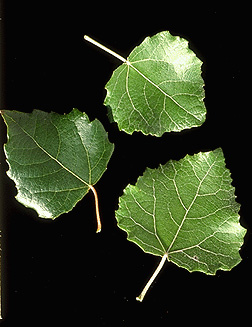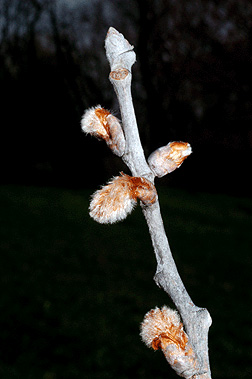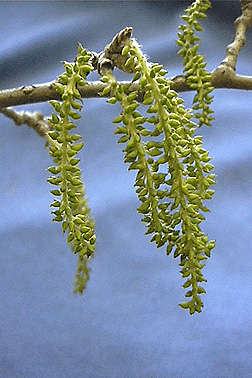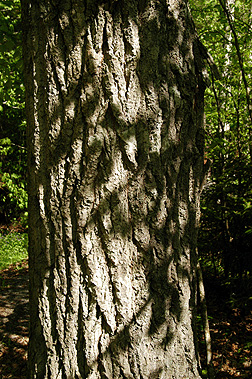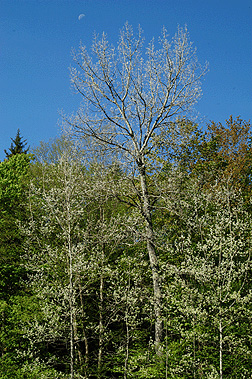 Virginia Tech Dendrology
Virginia Tech Dendrology
European white poplar Salicaceae Populus
alba L.
![]()
![]() symbol: POAL7
symbol: POAL7
Leaf: Alternate, simple, pinnately veined, 2 to 4 inches long, margins are coarsely toothed and sometimes lobed (maple-like), shiny green above and silvery white-wooly beneath.
Flower: Species is dioecious; male and female as pendulous catkins, 2 to 3 inches long, appearing before the leaves.
Fruit: Cottony seeds borne in dehiscent capsules which mature in late spring to early summer.
Twig: Medium-textured, gray to reddish brown and may have some gray pubescence; buds are ovate and pointed, reddish brown with some gray fine hairs, laterals are somewhat hooked. Has a bitter aspirin taste.
Bark: Smooth and milky greenish white for several years, later developing numerous lenticels which enlarge and develop into shallow dark splits and ridges.
Form: Generally a single straight trunk, with a thin, narrow crown. Coppices readily so it is often forms thickets.
Looks like: bigtooth aspen
- quaking aspen
Additional Range Information: Populus alba is planted in the USDA hardiness zones shown above and may seed into the landscape. Download the full-size PDF map.
More Information: Fall Color
External Links: USDA Plants Database - Horticulture Information
All material 2025 Virginia Tech Dept. of Forest Resources and Environmental Conservation; Photos and text by: John Seiler, Edward Jensen, Alex Niemiera, and John Peterson; Silvics reprinted from Ag Handbook 654; range map source information
